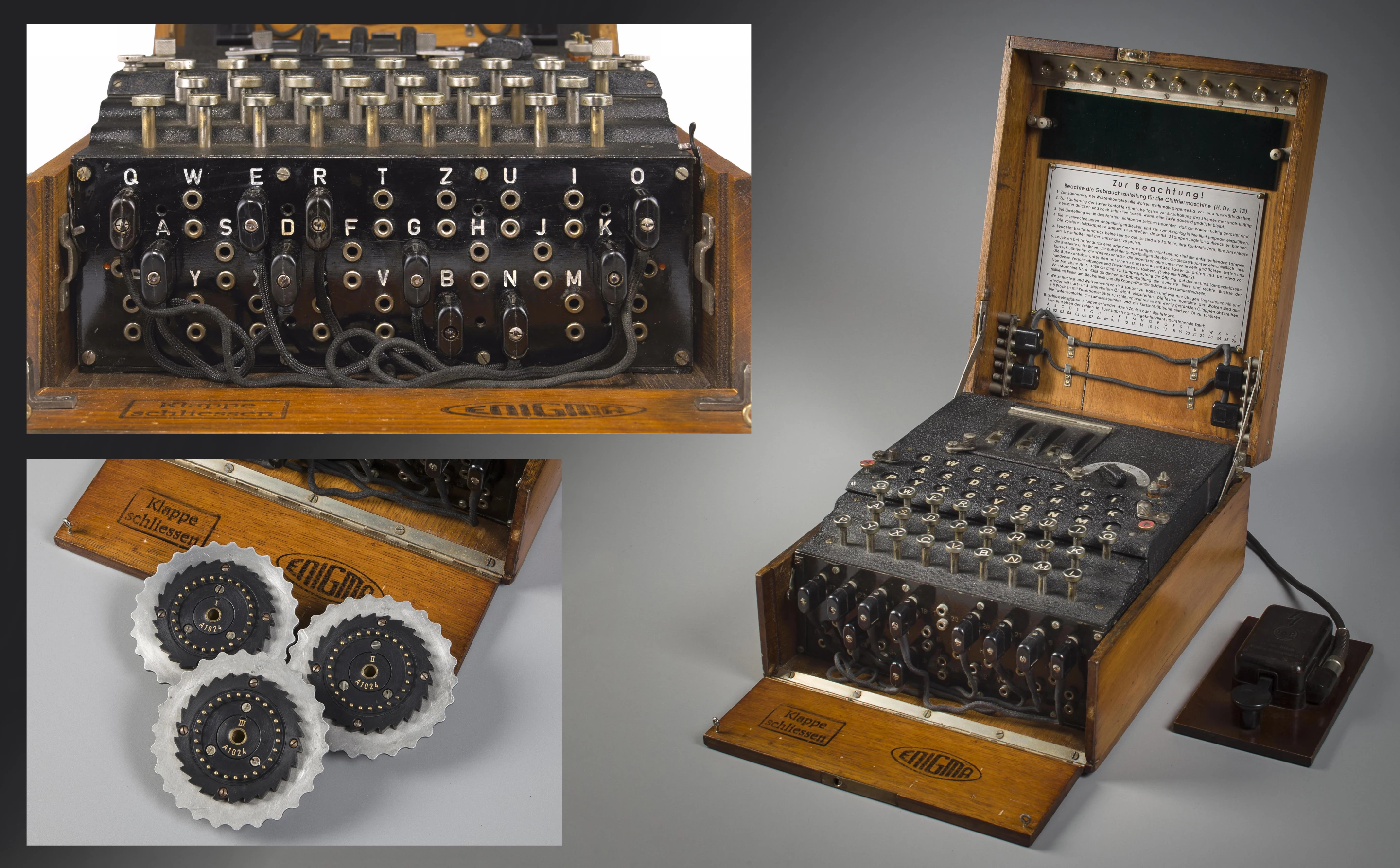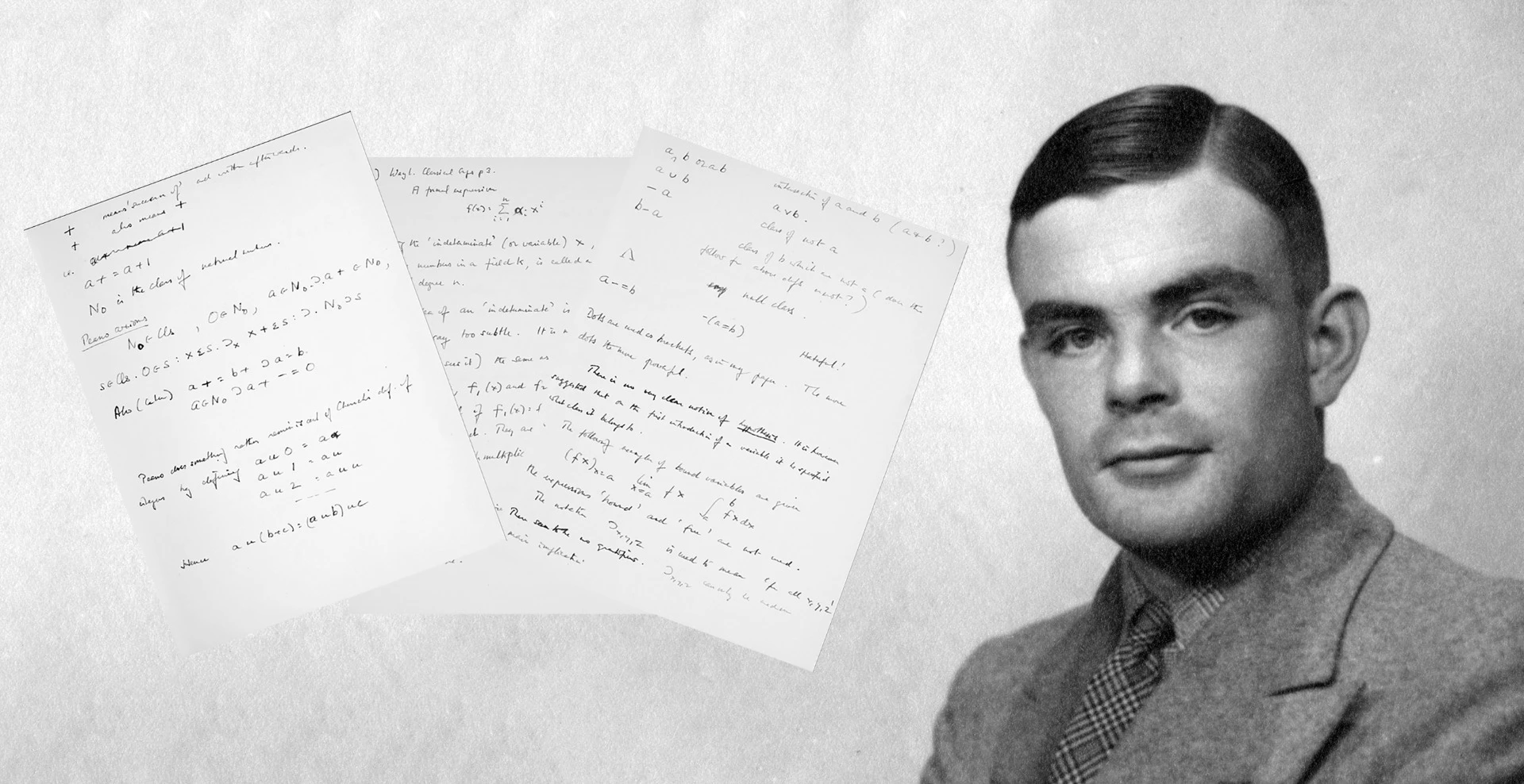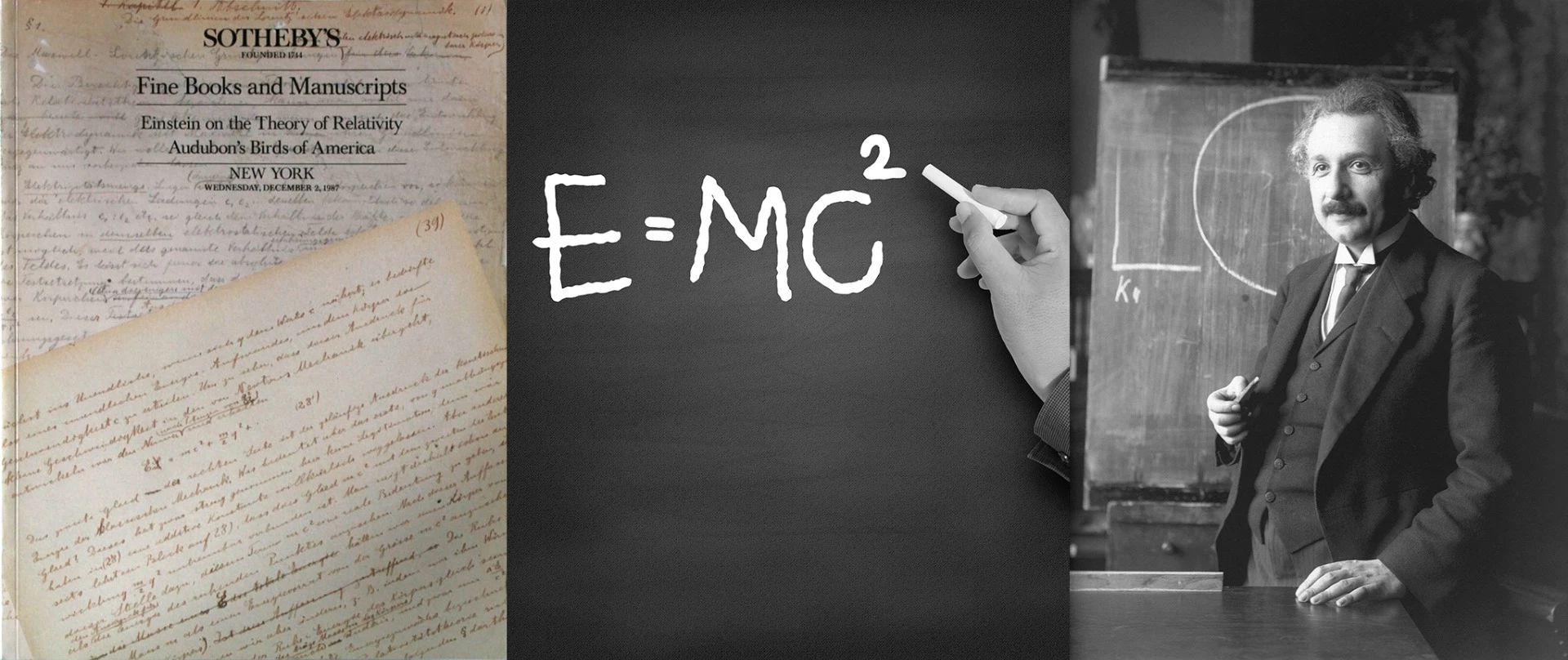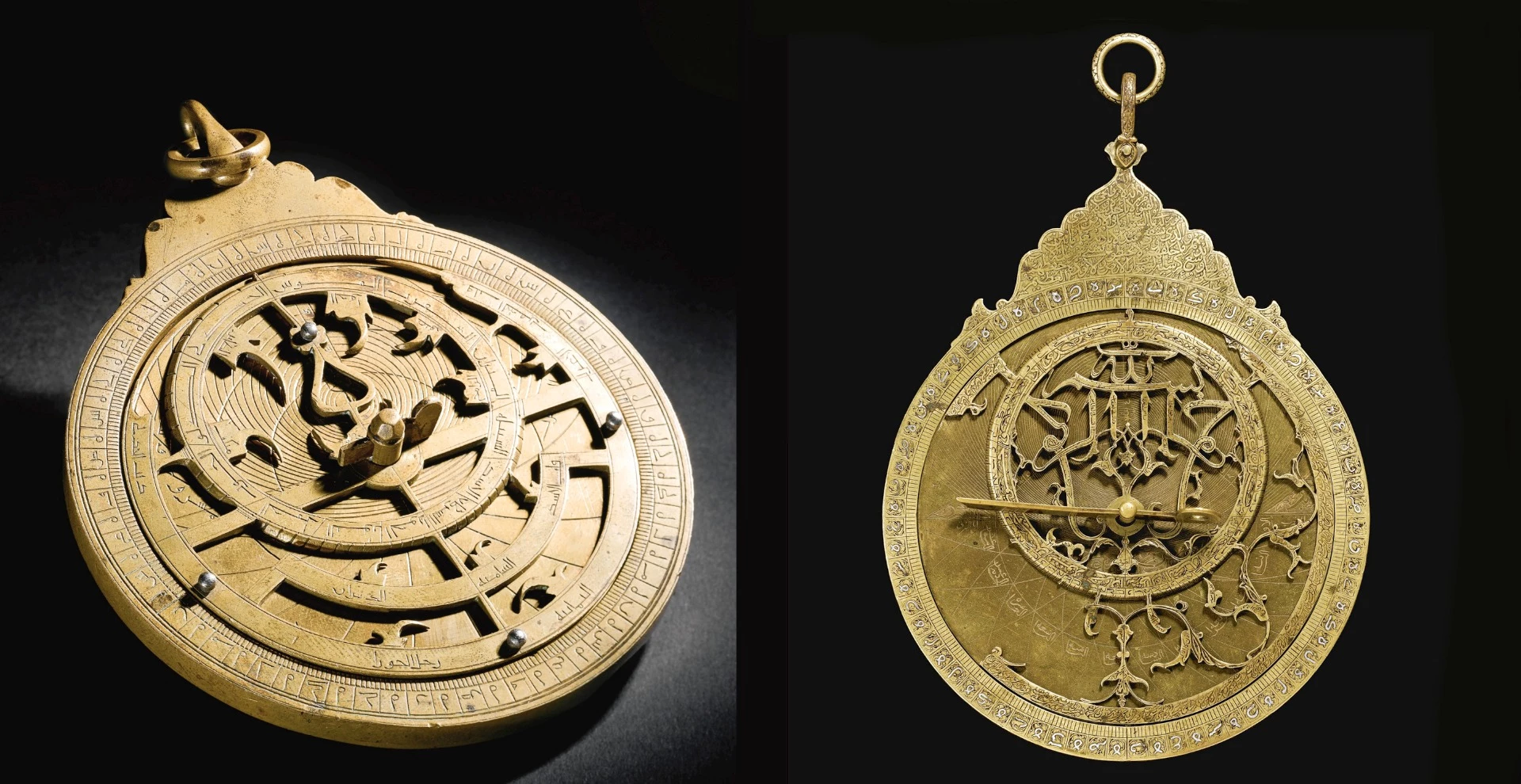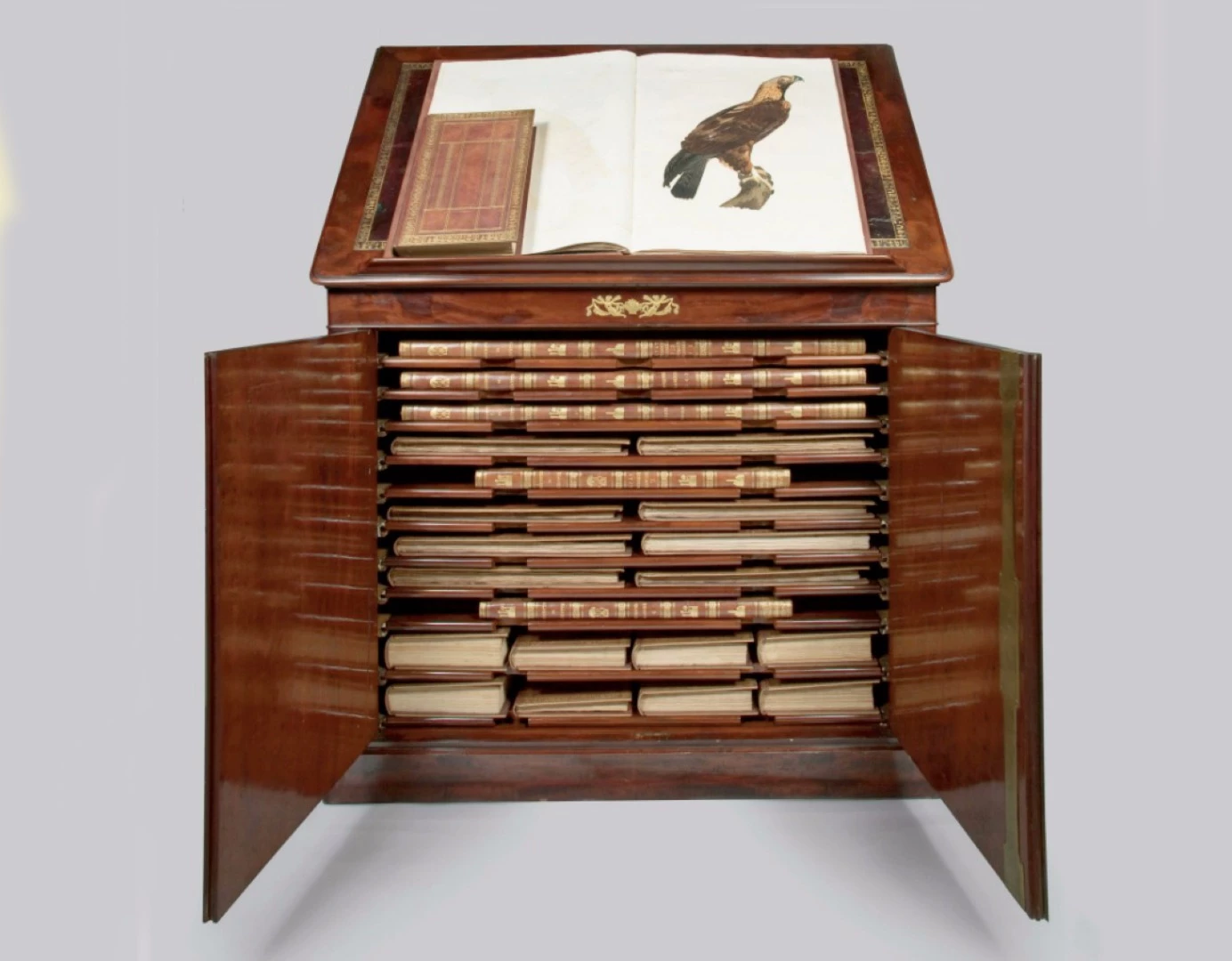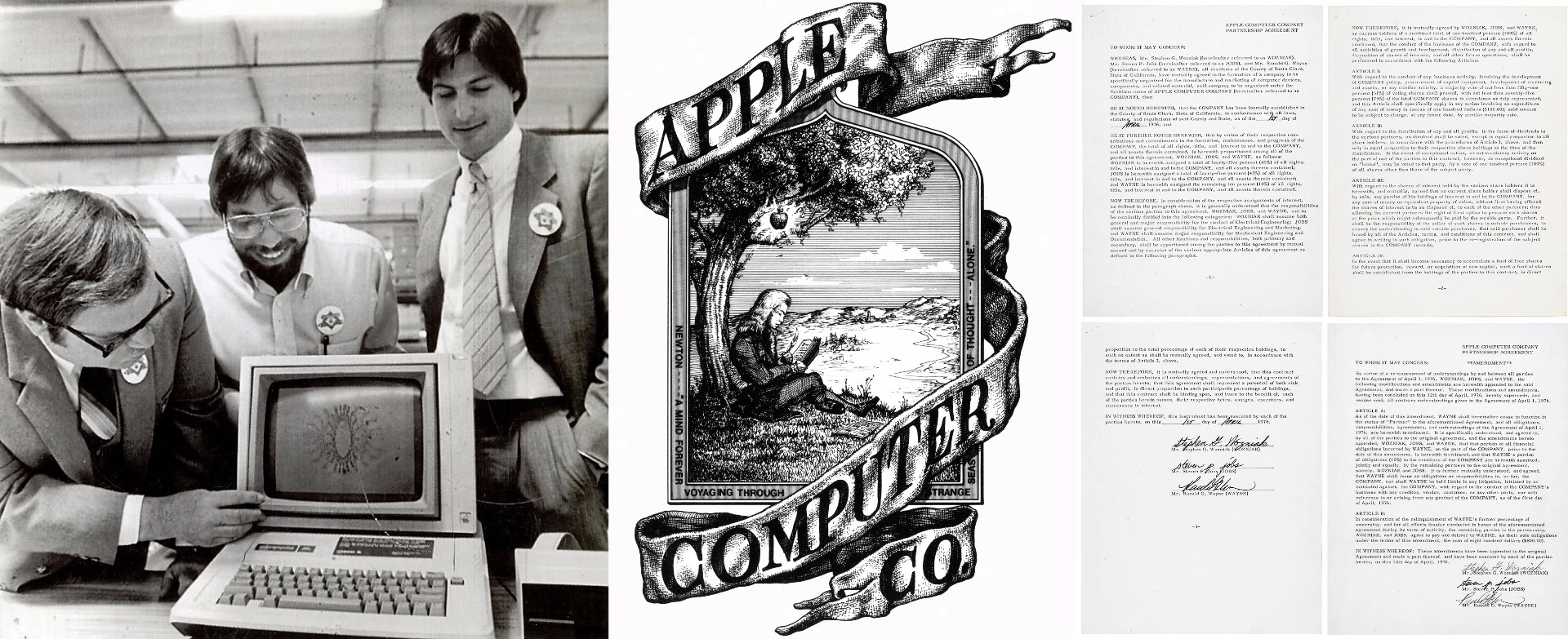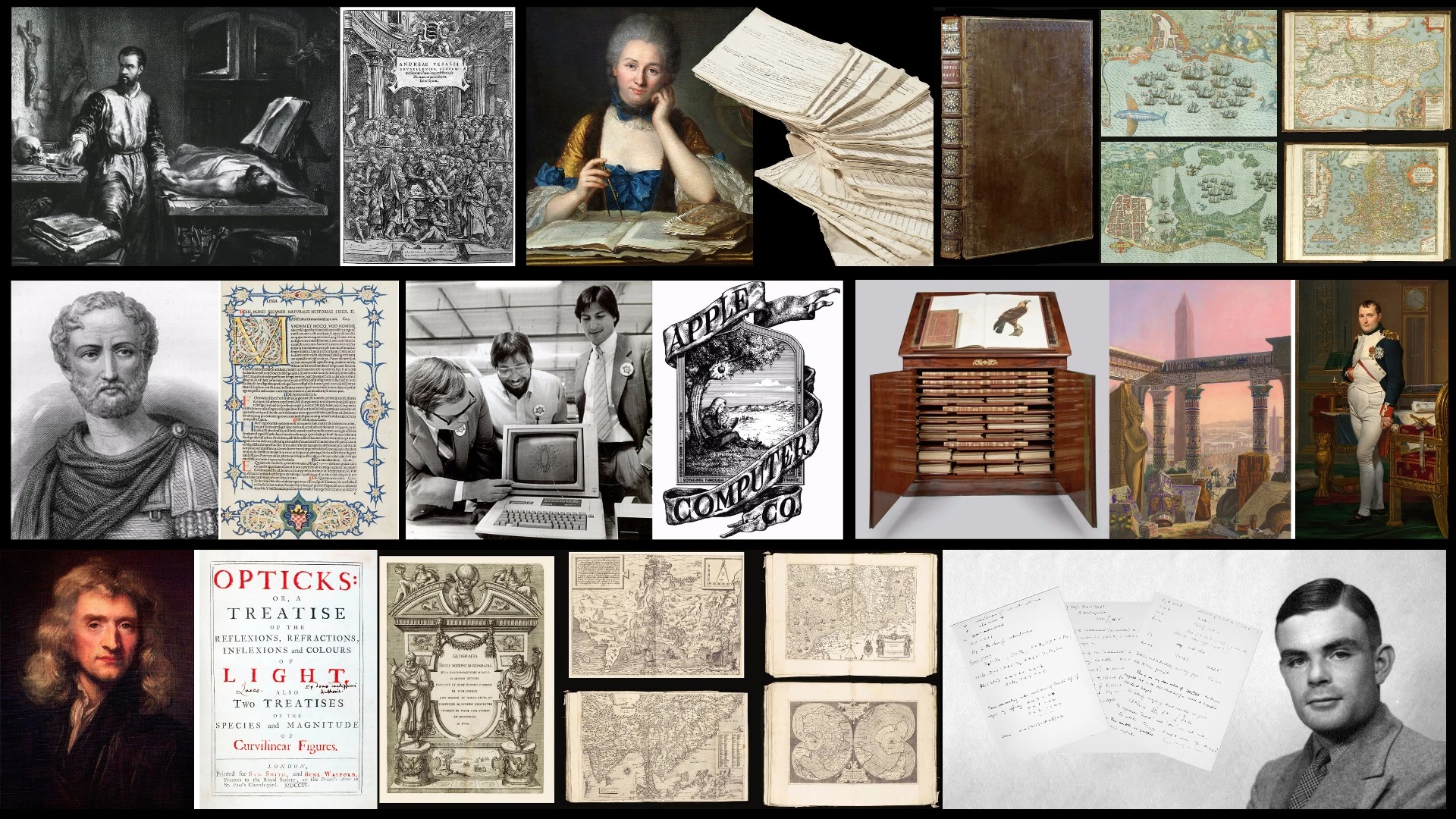UPDATED January 13, 2018 From the autograph corrections of Charles Darwin through to the genius of Newton, Einstein and Émilie du Châtelet, we continue to navigate our way through the fascinating list of the 50 most valuable scientific documents of all-time.
This is the fourth installment in our six part series covering the most valuable scientific documents and manuscripts. The introduction to the marketplace is the first part of the series, the second (numbers 50-41), and third part of the series (numbers 40-31) are already published, and numbers 20-11 and 10-1 will follow in coming days.
30 - On the Origin of Species by Means of Natural Selection by Charles Darwin
Price: $1,054,100 (£788,75)
Estimate: £300,000 - £500,000
Created: The first edition of On the Origin of Species by Means of Natural Selection, or the Preservation of Favoured Races in the Struggle for Life was published on 24 November 24, 1859, though these revisions would have been done in March-April, 1862
Auctioned: Christies (London), December 2017
Significance: Few scientific treatises in history had such a profound public impact as Charles Darwin's publication on November 24, 1859 of his On the Origin of Species by Means of Natural Selection, or the Preservation of Favoured Races in the Struggle for Life.
Immediately challenged by religion, Darwin's theory of evolution was championed so successfully by Thomas Henry Huxley that he was dubbed "Darwin's bulldog" by the media. Huxley, who gave us the terms "agnostic" and "agnosticism", ensured that the debate was characterized as "religion versus science" and he used Darwinism to campaign against the authority of the clergy in education.
The auctioned copy of Darwin's great work was the long-lost copy of Darwin's sheets of the third edition of his landmark book, complete with his autograph revisions. The one-time existence of these sheets has long been known, but their whereabouts and even survival remained a mystery until they recently surfaced.
No other example of Darwin's autograph revisions to the text of this important work had ever been offered publicly, so it is no surprise that they sold for more than US$1 million.
29 - Historia Naturalis (Natural History) by Gaius Plinius Secundus (Pliny the Elder)
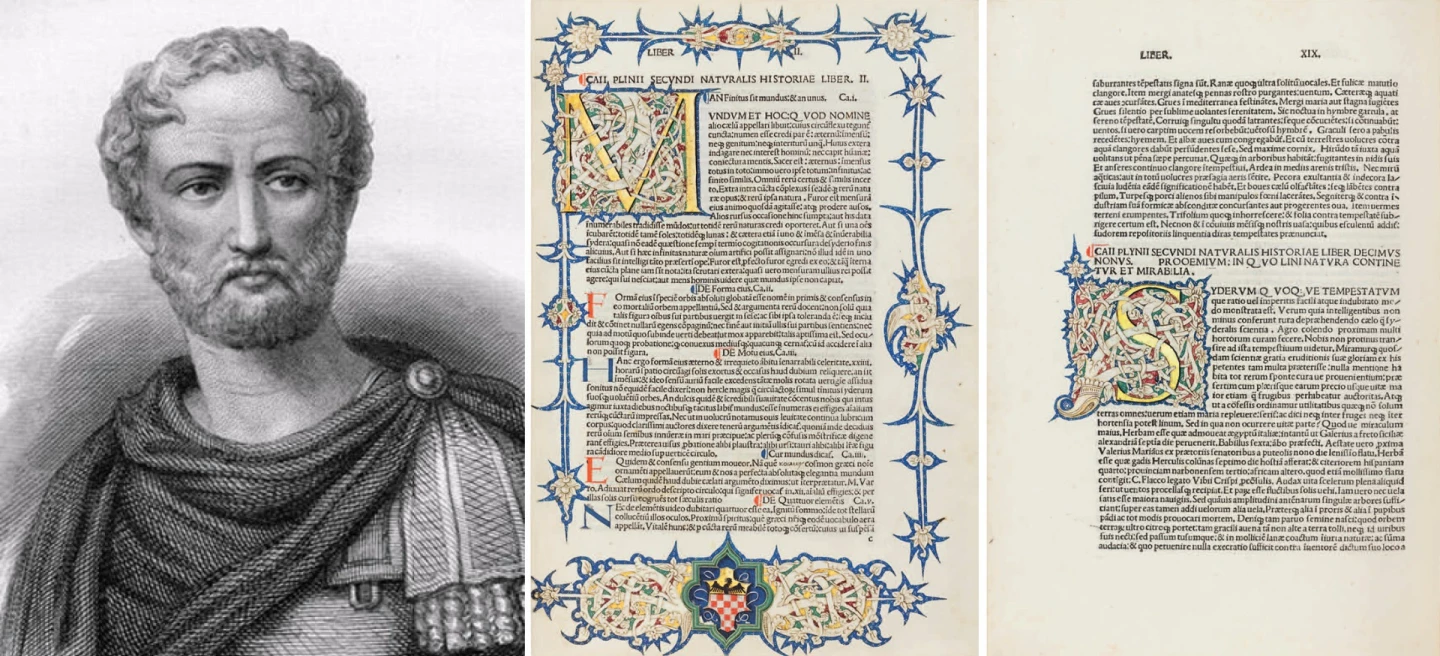
Price: $1,073,863 (£601,600)
Estimate: £400,000 - £600,000
Created: AD 77-79, printed 1470
Auctioned: Sotheby's (London), October, 2005
Significance: Historia Naturalis is a breathtaking work in its size and breadth and the largest single work to have survived from the Roman period. It is even more remarkable in that it is the work of just one man: Gaius Plinius Secundus (AD 23 – August 25, AD 79), also known as Pliny the Elder.
This book is essentially the first encyclopedia, referencing 3900 other work (with many more sources unattributed) and addressing a massive variety of subjects in attempting to chronicle every subject of knowledge known to man. Pliny must have been a remarkable man to even attempt such a monumental work, let alone achieve it. His nephew, Pliny the Younger, subsequently wrote that his uncle spent almost every moment having books read to him by servants, so that he could do other things while absorbing the knowledge.
Comprising 37 books in ten volumes, Pliny's Historia Naturalis covers astronomy, mathematics, geography, ethnography, anthropology, human physiology, zoology, botany, agriculture, horticulture, pharmacology, mining, mineralogy, sculpture, painting, and precious stones and it became a model for later encyclopedias with its referencing of original authors, and its index. The work was dedicated to the emperor Titus (the son of Pliny's close friend, the previous emperor Vespasian), in the first year of Titus' reign. It is the only work by Pliny to have survived and the last that he published. He began it in 77, and had not made a final revision at the time of his death during the AD 79 eruption of Vesuvius.
28 - A Lafreri-Duchetti Italian-Assembled-To-Order (IATO) Atlas
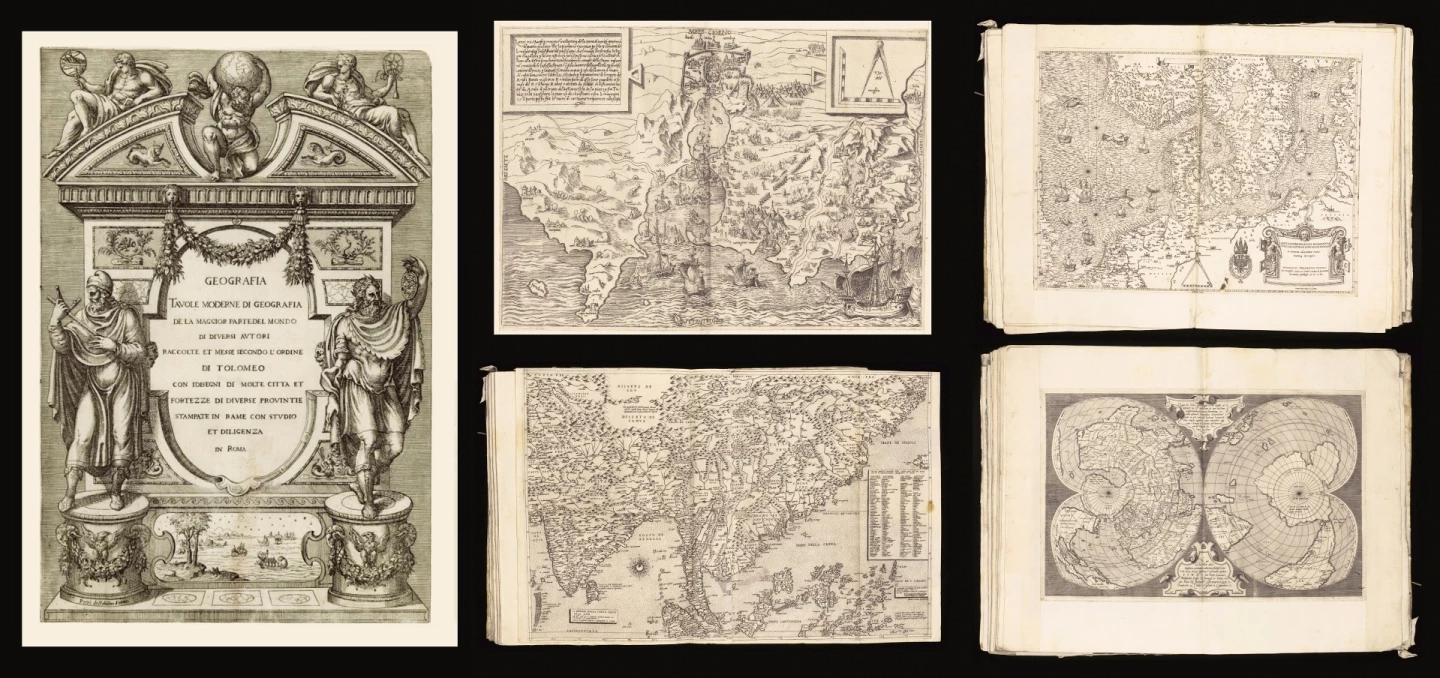
Full title: Geographia Tavole Moderne di Geografia de la Maggior Parte Del Mondo di Diverse Autori Raccolte et Messe Secondo L'ordine di Tolomeo
Price: $1,082,500
Estimate: $500,000 - $700,000
Created: Printed 1592 but compiled of maps from previous centuries
Auctioned: Christie's (New York), April, 2012
Significance: The best known name in the map business 500 years ago was Antonio Lefreri (1512-1577), a Frenchman from Burgundy who settled in Rome in 1540. Accurate maps were rare prior to 1500, but in this period Italian publishers began the practice of copying the individual maps of others and assembling them into collections specifically for the needs of individual customers, then binding of the whole together in book form.
These books subsequently became known as Italian-Assembled-To-Order (IATO) atlases and each was a one-off. Venetian and Roman dealers borrowed from each other, sometimes using a map without alteration, at other times procuring the copperplate and erasing the original imprint and substituting their own, resulting in a mixture of Venetian and Roman imprints.
Lefreri was an engraver, printseller, publisher and map trader and with those compatible skill-sets, became the first person to publish atlases in a uniform format. He was primarily a dealer and publisher, rather than an artisan in his own right. He carried in stock the prints made not only by his own establishment, but by others, and his own name appears comparatively seldom in the atlases attributed to him. The title page of this document, with the added signature of Pietro de Nobili as publisher, is of special importance since few of the Lafreri-school atlases were issued with title-pages, and no other copy carries this second and final state of the title, with Nobili's name. This confirms the descent of the Lafreri business through Duchetti (D.1585) to Pietro di Nobili. The figure of the Titan Atlas supporting the world is first used on this title-page, and was later widely imitated, eventually leading to the name of the genre. That's quite some provenance, and hence the value.

Some perspective on price: The spherical astrolabe of Islamic astronomer Al-Rudani (1627 – 1683) sold for $1,106,318 (£722,500) on an estimate of £100,000 - £150,000 at a Christie's (London) auction in October, 2015, becoming one of the most expensive scientific instruments ever sold at auction.
27 - On The Theory of Relativity by Albert Einstein

Price: $1,155,000
Estimate: NA
Created: 1911 - 1912
Auctioned: Sotheby's (New York), December, 1987
Significance: Albert Einstein's Theory of General Relativity was presented to the Prussian Academy of Sciences over four lectures in November 1915, and published on 2 December, 1915. The General Relativity Theory built on the insights of Einstein's first theory of relativity, the Special Relativity theory from 1905.
This 72 page autograph manuscript, written in German in either Prague or Zurich in 1912, is one of only three of Einstein's early papers on the Theory of Relativity known to survive. This is the earliest and the longest of these, and was the only one never to have been published. The other early relativity manuscripts are the 11-page "Zum Relativitäts-Problem" ("On the Relativity Problem") written in 1914 and published in Scientia 15 (1914) which is believed to be in private hands, and the 45-page "Die Grundlagen der allgemeinen Relativitätstheorie" written in 1916 and published in the Annalen der Physik 49 (1916).
Some perspective on the price: This document went to auction again in 1997, with an estimated price of $4 million to $6 million. By law (in America, there are precedents requiring the reserve price to be equal to or lower than the lower estimate), that means a $4 million bid would have seen the manuscript sold. A high bid of $3.3 million did not secure the sale, but we only list verified sales in our listings, so although this item might easily be much higher on the list, we've used the only verified sale price.

Several handwritten lyrics to popular songs have fetched similar amounts at auction, with John Lennon's original words for the Beatles' "All You Need is Love" fetching $1.25 million, Don McLean's handwritten lyrics to "American Pie" fetching $1,205,000 and the two-page words written by John Lennon for "A Day in the Life" from the Beatles' 1967 album Sgt. Pepper's Lonely Hearts Club Band fetching $1,202,500. Popular culture outsells most comparable genres: Wolfgang Amadeus Mozart's autograph manuscript for "The Kyrie in C" fetched $974,000.
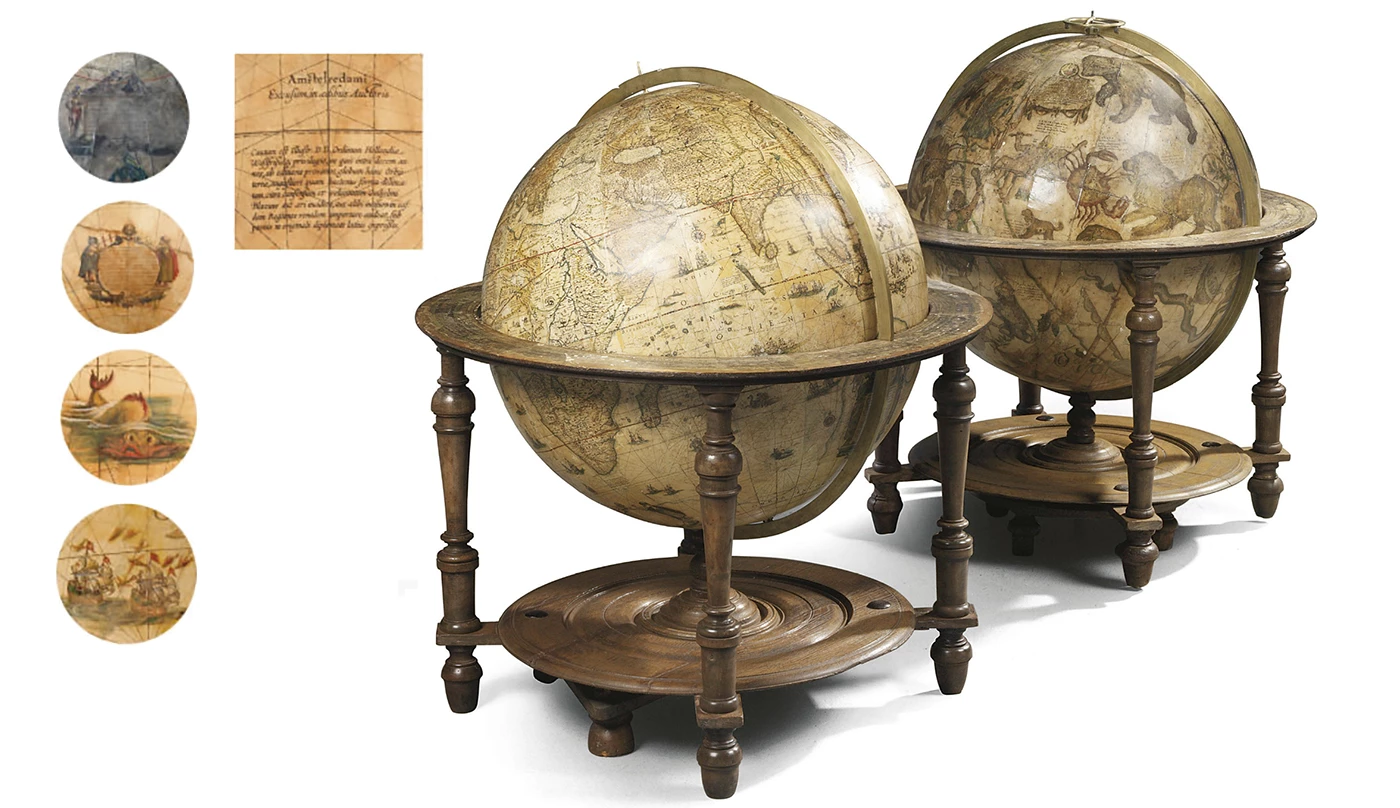
A pair of 68 cm (26 inch) library globes (one terrestrial and one celestial) made by Willem Janszoon Blaeu (father of Johannes Blaeu – see #38 on this list) sold for $1,239,364 (€793,850) at a Christie's (Amsterdam) auction in April, 2008. The terrestrial globe was made circa 1645 – 1648, and the Celestial Globe circa 1630. They're not quite a scientific document or manuscript, but close enough for a mention.
26 - Exposition Abrégée Du Système Du Monde Selon Les Principes De Monsieur Newton by Émilie du Châtelet
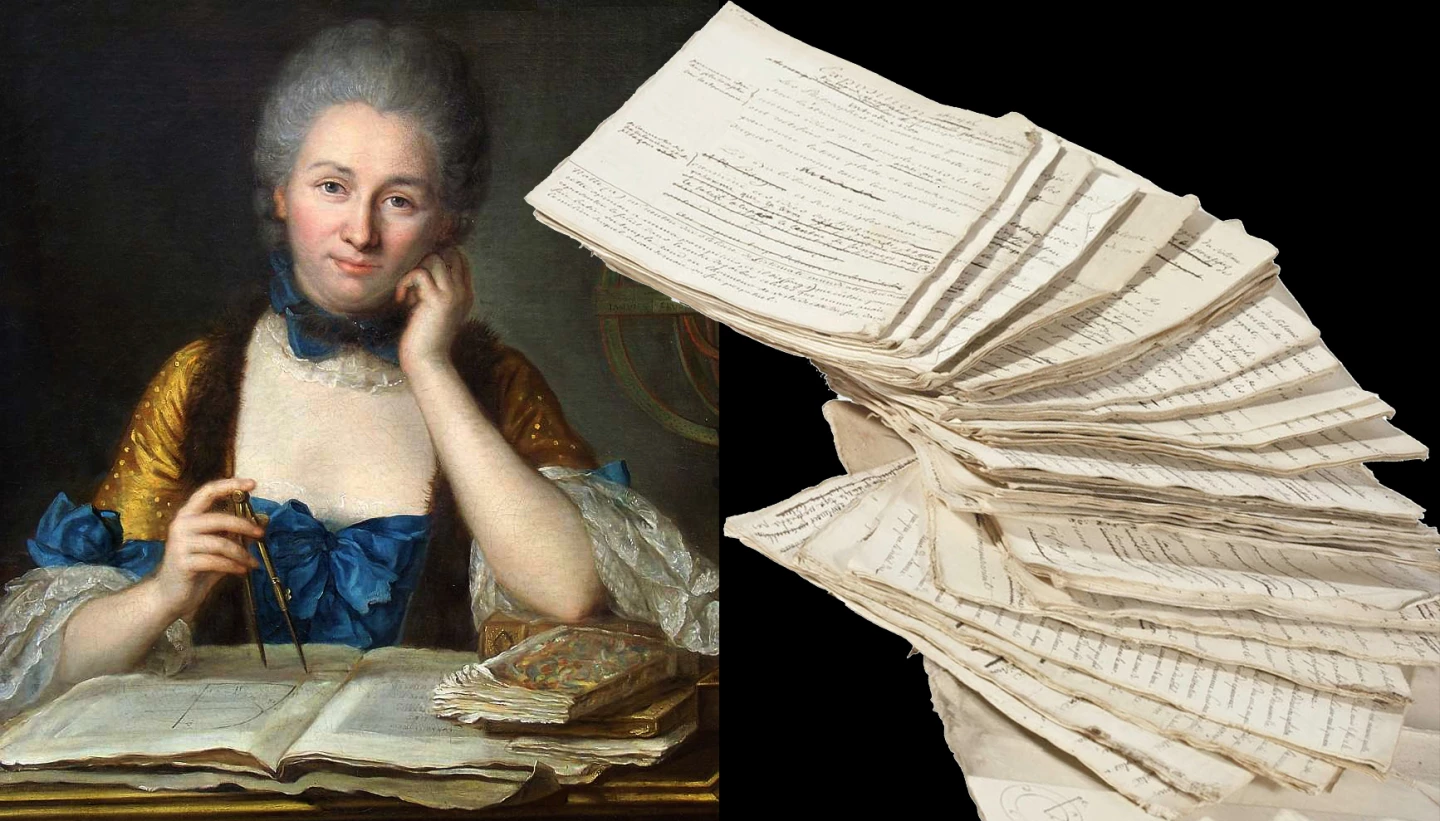
Price: US$1,240,805 (€961,000)
Estimate: €400,000 - €600,000
Created: Published 1756, written 1745 to 1749
Auctioned: Christie's (Paris), October, 2012
Significance: The handwritten notes and manuscript from Émilie du Châtelet's translation of Isaac Newton's Principia (see #10 in this list), which was published as "Exposition Abrégée Du Système Du Monde Selon Les Principes De Monsieur Newton, Incluse Dans Le Second Tome Des Principes Mathématiques De La Philosophie Naturelle D'isaac Newton" ("Abbreviated Exposition of the World System Under the Principles of Mr. Newton including the second volume of the mathematical principals of Natural Philosophy).
This is the work of one of history's most accomplished, controversial and intriguing female scientists, Gabrielle Émilie Le Tonnelier de Breteuil, the Marquise du Châtelet (1706 – 1749). Émilie du Châtelet was a French mathematician, physicist and author during the Age of Enlightenment and her work (primarily this book but several other significant works) was instrumental in gaining Isaac Newton's theories widespread acceptance in Europe. Not only did she translate (into French) and revise Newton's most significant work, but based on the theories of Newton and Liebniz regarding the conservation of momentum, she proposed the law of conservation of energy, a staple of high school physics to this day.
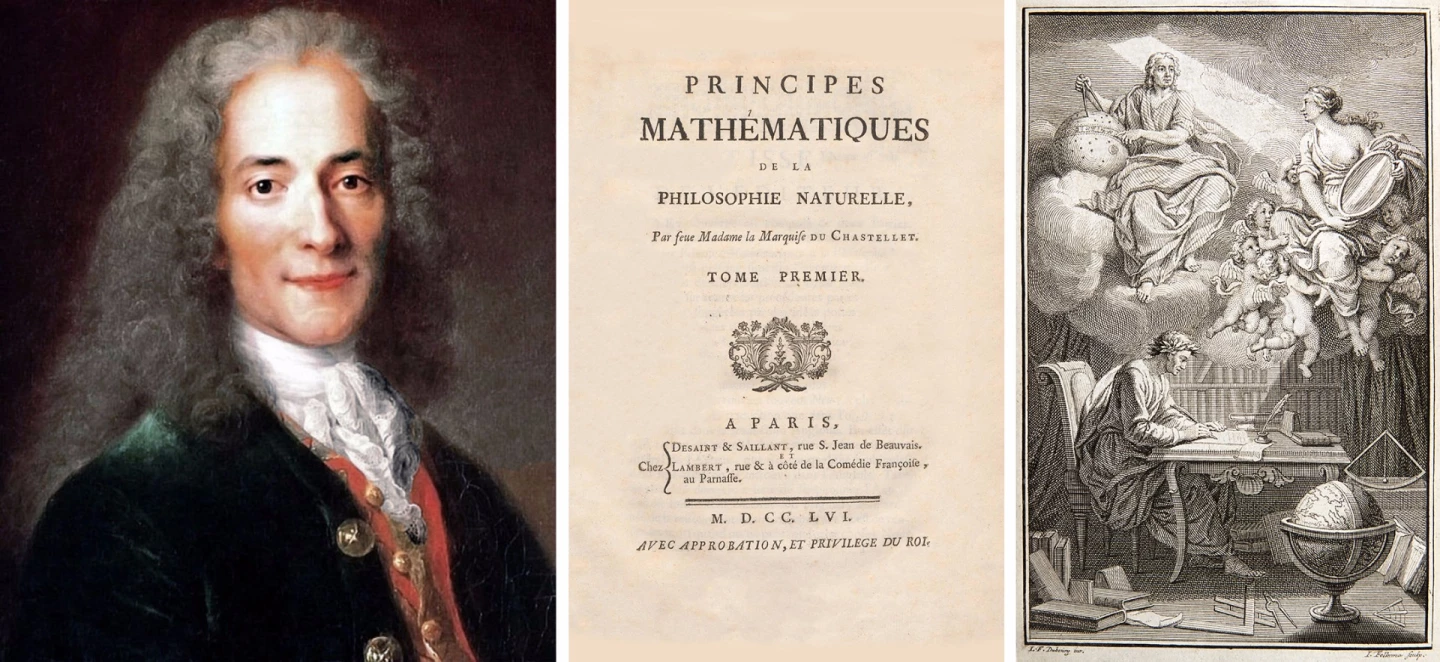
Noted for numerous affairs with men of great intellectual capacity both before and during her marriage to the Marquis Florent-Claude du Chastellet-Lomont through whom she gained her title, it was her 15-year affair and intellectual alliance with the great philosopher Voltaire during which she produced her greatest work, at the same time as creating a salacious scandal that was known throughout French society.
Voltaire's own book on Newton's theories, which sought to explain them in a language accessible to the common man, Eléments de la philosophie de Newton, has a foreword jointly written by Émilie, and a frontispiece illustration (see image gallery) in which she appears as Voltaire's muse. On one occasion Voltaire actually stated that the work was really hers, something that gained further credibility with the documents that came to light at the same sale as these notes. In other words, such was his respect for her intellect, the great Voltaire plagiarized her work and happily acknowledged it.
Along the way, Émilie found time to have three children and despite living in an age when the education of women was frowned upon, and females were not allowed admittance to venues where intellectuals met, nor membership of societies designed to foster scientific advancement, she crammed it all into just 42 years, and died giving birth to her fourth child, which also did not survive. Madame la Marquise du Châtelet was an extraordinary individual of towering intellect and an inspiration to all those whose destiny is challenged by circumstance.
Some perspective on the price: Several Marilyn Monroe dresses which fetched similar prices at auction. Marilyn Monroe's scandalous affair with United States President John F Kennedy was of similar stature to Emilie and Voltaire. The dress in which Marilyn Monroe sang "Happy Birthday Mr President" on television to President Kennedy fetched $1,265,700 while her signature red-sequined showgirl gown with feathered hat from the 1953 movie Gentlemen Prefer Blondes fetched $1,476,000. Marilyn set the world record price for a piece of clothing sold at auction in 2011 when the dress in which she famously stood over the subway grate in the 1955 movie The Seven Year Itch, fetched $5,520,000.
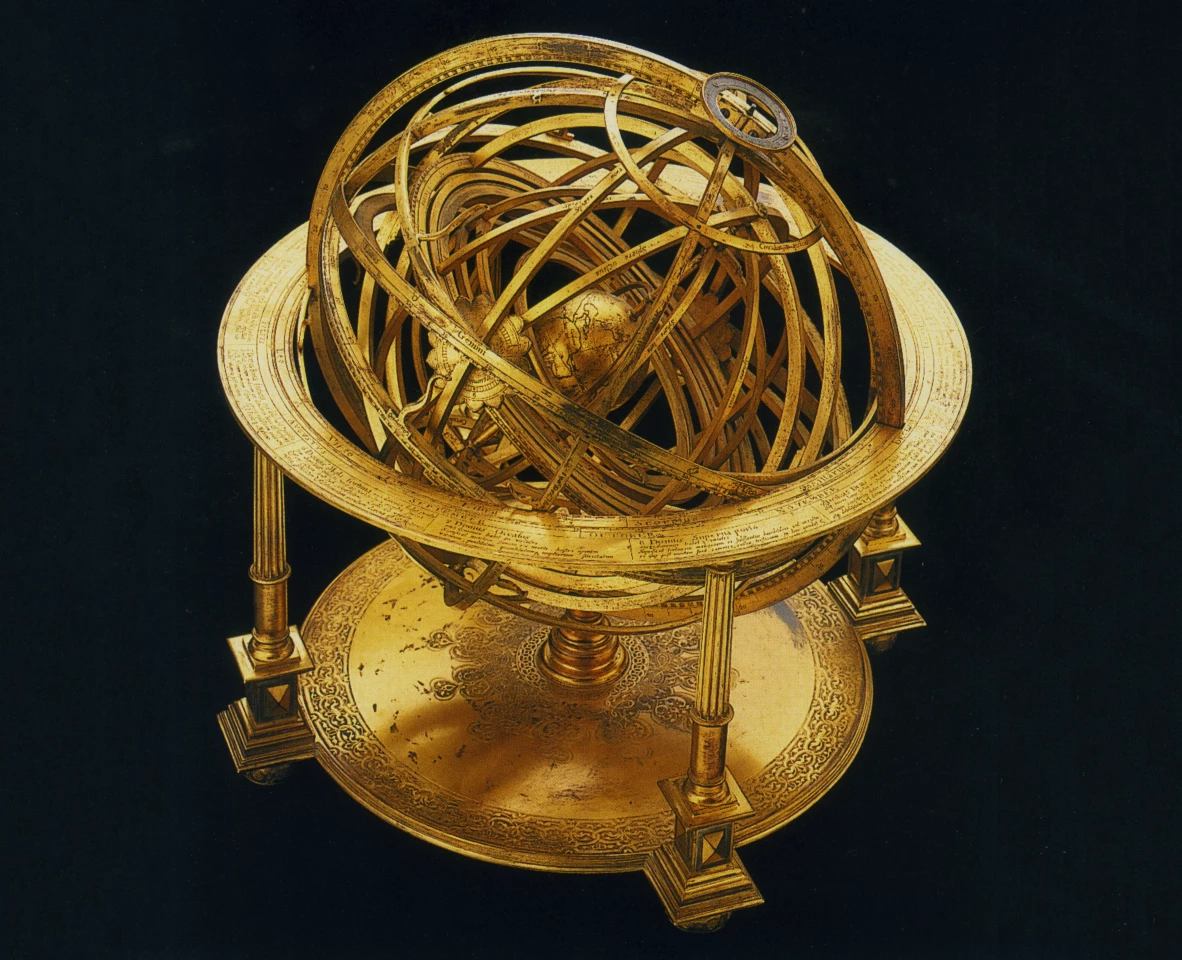
One of the most expensive scientific instruments ever sold fetched a similar price, being a gilt-brass Ptolemaic Armillary Sphere sold at a Christie's (London) auction in April, 1997 for $1,250,991 (£771,500). Though unsigned and undated, the armillary sphere is undoubtedly associated with the terrestrial and celestial gilt-metal globes made for Sultan Murad III (see perspective on price for #20 - Liber Insularum Archipelagi) as it was engraved by the same hand as the globes, and bears the same date of 1579.
25 - Atlas of England and Wales by Christopher Saxton
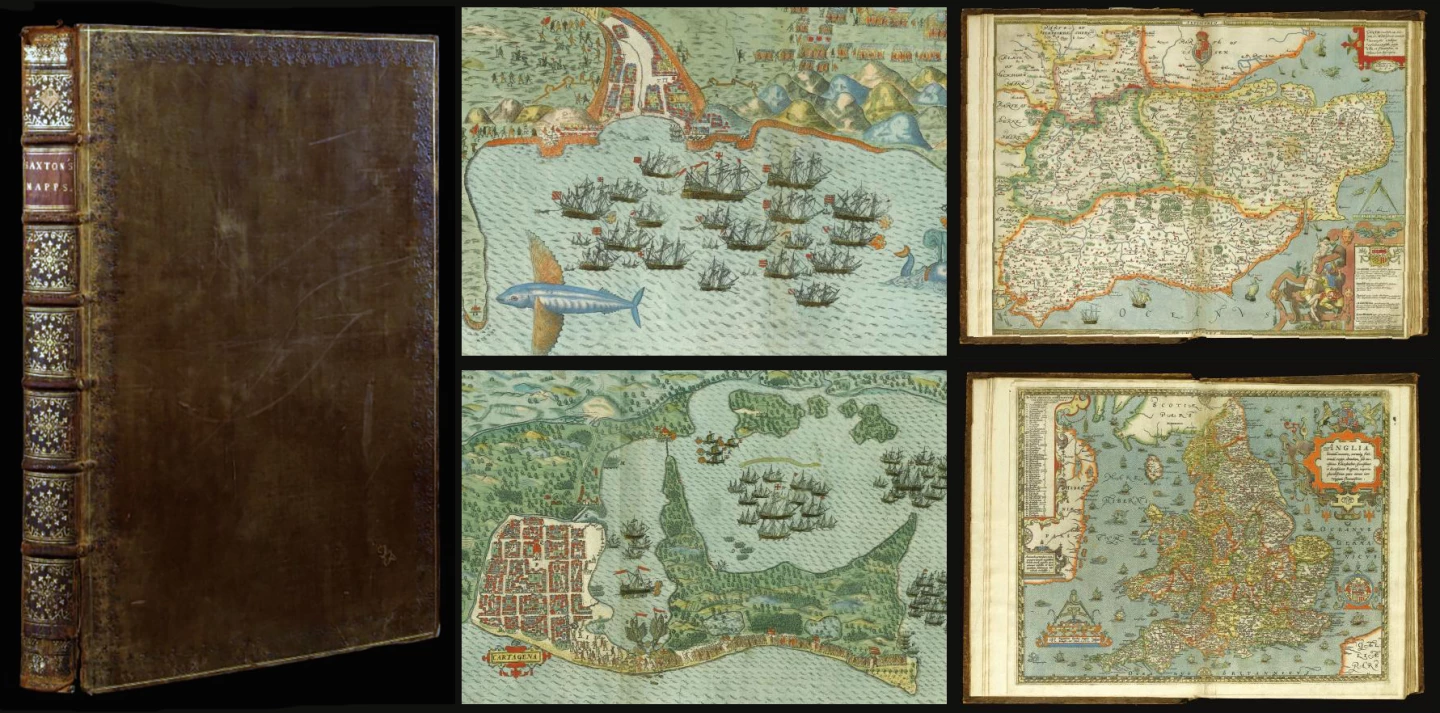
Price: US$1,296,471 (£669,600)
Estimate: £500,000 — £700,000
Created: 1574 to 1579, printed 1594
Auctioned: Sotheby's (London), March, 2007
Significance: This book comprises two landmarks of Elizabethan cartography, being the first printed atlas of England and Wales, surveyed by "the father of English cartography" Christopher Saxton, and a set of five maps of Sir Francis Drake's Caribbean "expedition" to the West Indies in 1585-1586.
24 - Opticks: a treatise of the reflexions, refractions, inflexions and colours of light by Sir Isaac Newton
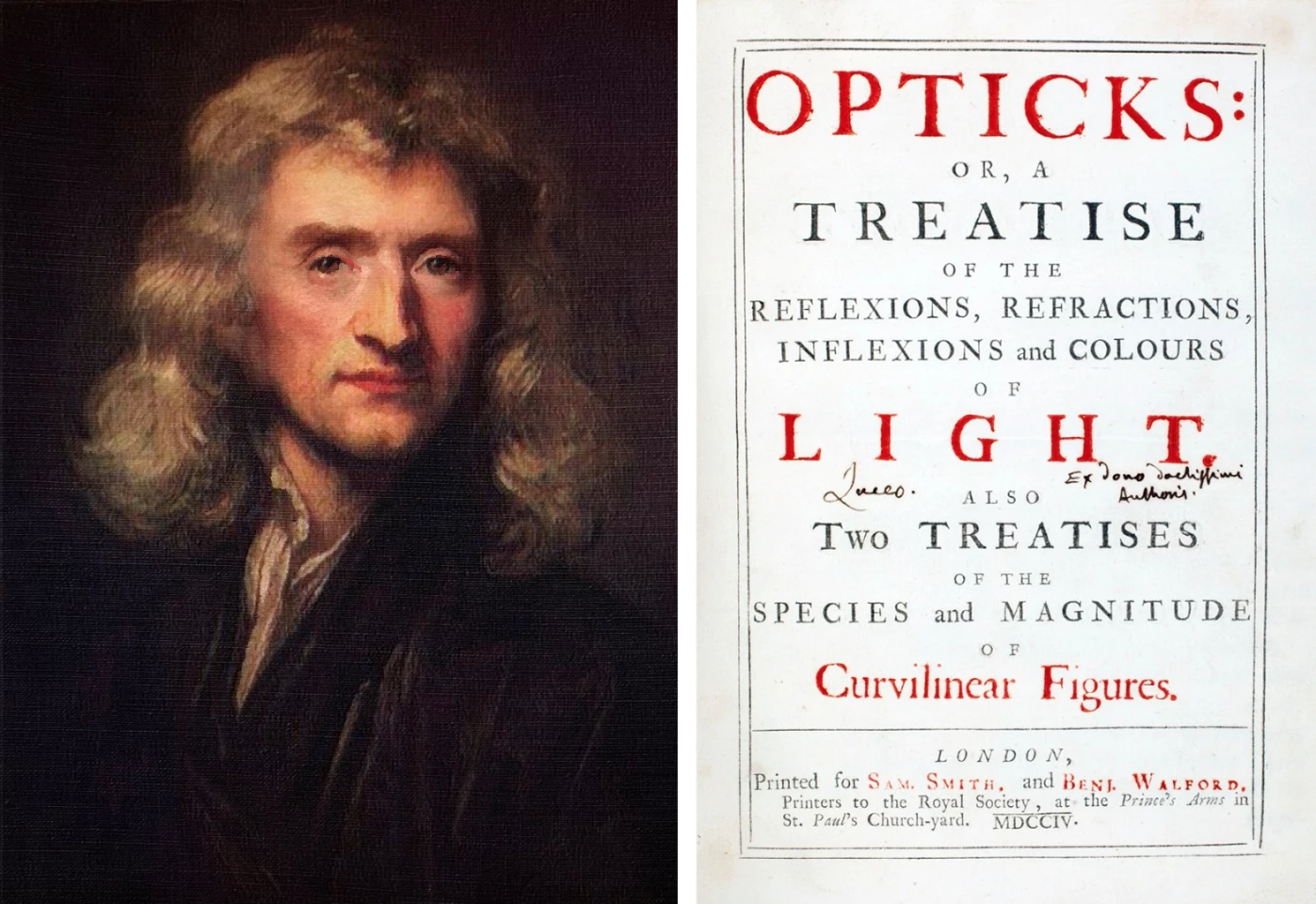
Price: $1,330,000
Estimate: $400,000 — $600,000
Created: Begun by Newton (1642-1727) when he was in his twenties but first published in English in 1704
Auctioneer: Sotheby's (New York), December, 2015
Significance: Like the copy of Newton's Principia that appears in tenth place on this list and was the presentation copy given by Newton to King James II, this copy of Sir Isaac Newton's Opticks is also a presentation copy, given by Newton to the astronomer Edmund Halley (his publisher and Royal Society colleague) and is inscribed by Halley on the title-page, "Luceo. Ex dono doctissimi Authoris." "Luceo" is not a Latin word but it is believed to mean "I shine" and the same word also appears on the title-page of Halley's copy of the first edition of Principia, which is also annotated by both Newton and Halley. The other words mean "gift of the most learned author." This copy was previously sold at a Sotheby's London auction in November 1971, when it became part of the Grace K. Babson Collection of Newtoniana. Provenance is critically important to the price of rare books and manuscripts, and the book subsequently passed into the collection of Robert S. Pirie.
Isaac Newton was just 24 years old when he began working on improving the optics of telescopes, recognizing that the generation of the spectrum is related to the physical properties of light and not those of the prism. He then demonstrated his theory by recomposing the white light though a second prism, and making the first important scientific advance of his time. By the age of 30, he managed to suppress the chromatic aberration in telescopes and revealed his findings at the Royal Society, which published his lecture in its Philosophical Transactions. Therein began one of the nastiest quarrels between great men in the history of science, when his work on the properties of light was criticized by Robert Hooke (1635-1703, the man who first used the word "cell", gave us microscopy, Hooke's Law, the watch balance spring some 15 years before Christiaan Huygens, the iris diaphragm in cameras and the universal joint used in motor vehicles). So averse to criticism was Newton, that he did not publish this book until Hooke had died, despite much of the original thought it contained being decades old.
Opticks analyzes the fundamental nature of light by means of the refraction of light with prisms and lenses, the diffraction of light by closely spaced sheets of glass, and the behavior of color mixtures with spectral lights or pigment powders. It is considered one of the great works of science in history.
Opticks was significant in many other ways too, one being that it was first published in English rather than in the Latin traditionally used by European philosophers up to that time. With Britain's growing confidence and world influence, and in particular the Royal Society, the English language was overtaking Latin and becoming the language of science and business. Nonetheless, Newton did follow traditional protocol, publishing a Latin translation two years later in 1706.
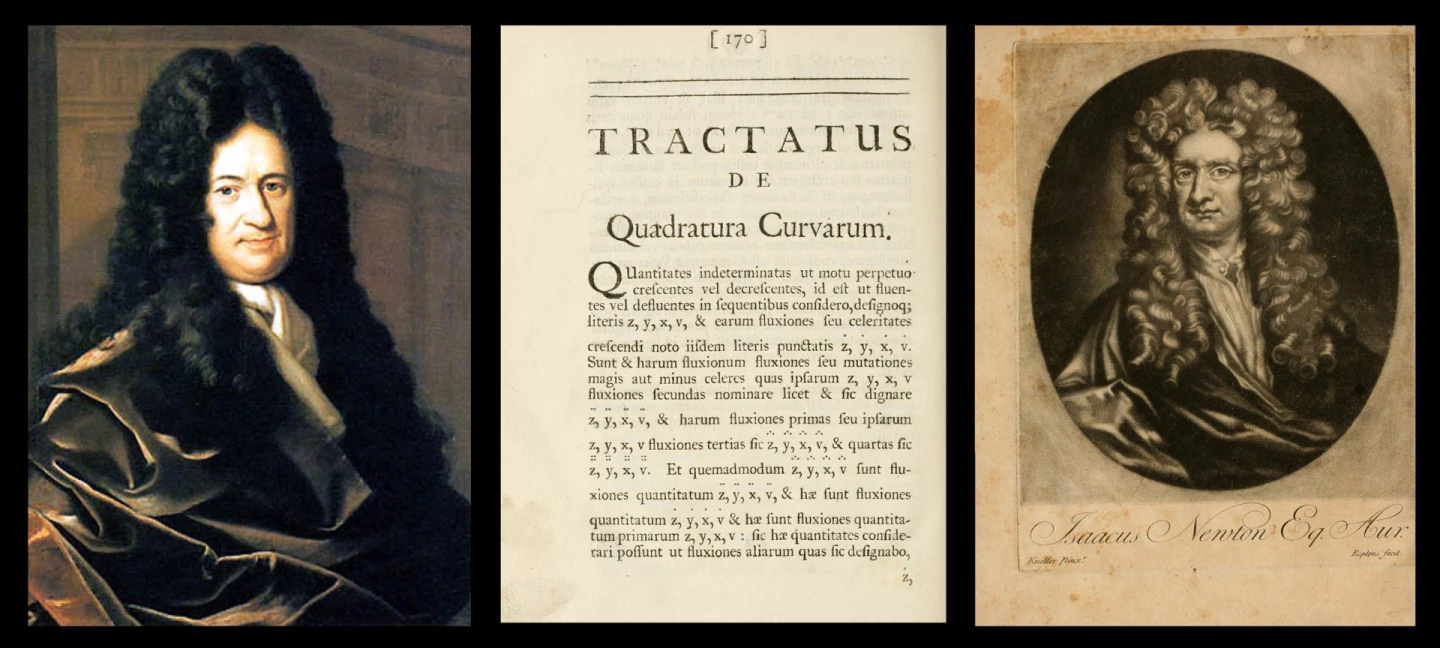
Finally, Newton's work on pure mathematics was virtually hidden from all but his personal correspondents for many decades, and then a great international debate began with both Newton and Willhelm Gottfried Leibniz claiming the prize of having invented calculus. Mathematics is the language of the gods and it was not until we had calculus, which enabled us to explore the science of things that change, that science was able to move forward at the frenetic pace it has since THIS BOOK.
This final addition to Opticks, a tract on the quadrature of curves (integration) and another on the classification of the cubic curves, is one of Newton's many attempts to assert his priority over Leibniz. The two "Treatises of the Species and Magnitude of Curvilinear Figures" included at the end of the text of Opticks are Newton's first published mathematical papers and were intended to assert his priority over Leibniz in the discovery of the calculus. His Cambridge lectures, delivered from about 1673 to 1683, were published in 1707. It would be fair to say that both of these great men came up with calculus independently, as did the Persians five hundred years before them, and the Greeks went very close 2000 years before them, too. Our view of scientific history is largely eurocentric and it is very sad that the scientific breakthroughs of the Chinese civilization are so poorly recognized, as we will only fully understand our heritage when it is properly documented.
Some perspective on the price: A perfect contrast of the different perceptions of societal value of historical objects was the sale of the original rules (circa 1859) of the Sheffield Football Club, the world's oldest football club and the oldest set of rules for "the World Game." The documents which marked the birth of modern football sold for GBP £881,250 (US$1,420,575) at a Sotheby's auction in July, 2011. Sotheby's produced a promotional video prior to that sale which can be viewed here. Some other significant cultural artifacts which have sold for a similar amount include the Porsche 911S which Steve McQueen drove through the French countryside (see #11) for the first three minutes of the cult movie Le Mans ($1,370,000 - roughly ten times the value of an identical car without the McQueen/Movie provenance), and the dress in which Julie Andrew's sang "Do-ray-mi" in the movie The Sound of Music ($1,300,000). Another that almost made this list was Consolatio Philosophiae by Boethius which sold for $1,352,027 (£769,600) at a Sotheby's auction in July, 2005.
23 - Description De L'Egypte by L'Armée Français
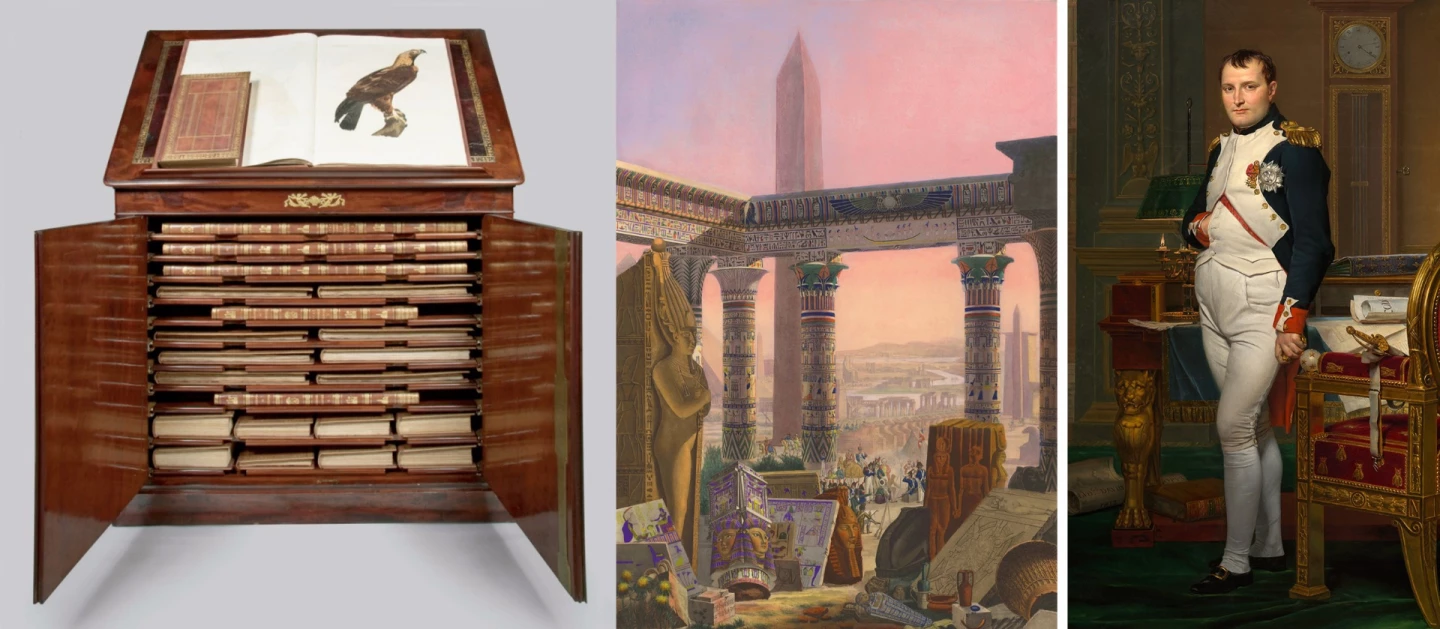
Price: $1,562,506 (€1,095,400) Created: 1809 -1829
Auctioneer: Christie's (Paris), May, 2011
Significance: As close as we have to a time machine, at least for now, the Description de l'Égypte (full title: Description De L'Egypte Ou Recueil Des Observations Et Des Recherches Qui Ont Été Faites En Egypte Pendant L'expédition De L'Armée Française) was a series of publications, begun in 1809 and continuing until 1830, which offered a comprehensive scientific description of ancient and modern Egypt.
It is the collaborative work of about 160 civilian scholars and scientists who accompanied Napoleon's expedition to Egypt in 1798 - 1801 as part of the French Revolutionary Wars, as well as about 2000 artists and technicians, including 400 engravers, who would later compile it into a full work. The full set (pictured above) is breathtaking in its beauty and comprehensiveness. This full collection of books and the myriad illustrations is available online as part of the New York Public Library Digital Collection.
Sadly, all of the original manuscripts for this historically significant masterpiece were lost in 2011 when a fire engulfed Egypt's Institute for the Advancement of Scientific Research, destroying 166,000 of the historical manuscripts on hand.

Some perspective on the price: The world's most expensive astrolabes sold for similar amounts to Napoleon's epic Description De L'Egypte. The most expensive astrolabe ever sold (above left) was the royal brass astrolabe of the Ottoman Sultan Bayezid II (1447 – 1512 and ruled from 1481) which sold for $1,546,447 (£962,500) at a Sotheby's (London) auction in October, 2014. The astrolabe is dated 911 AH/1505-6 AD. The next most expensive (above right) is a Safavid silver-inlaid brass astrolabe made in the late 17th century in the capital of the Persian empire, Isfahan, by well-known instrument maker Muhammad Khalîl and decorated by Muhammad Bâqir. The astrolabe fetched $1,430,352 (£826,500) at a Sotheby's (London) auction in October, 2008.
22 - Apple computer contract and Dissolution of contract signed by Steve Jobs, Steve Wozniak and Ronald Wayne

Price: $1,594,500
Created: 1976
Auctioneer: Sotheby's (New York), December, 2011
Significance: The world's biggest company and certainly one of its best known brands began just four decades ago. The company that pioneered the WYSIWYG computer-human-interface has had its ups and downs, but survived several near-death experiences before finding its stride and creating the iPod, iPhone, iPad and a host of other innovations that have changed the world. This is the document which marked the beginning of the first stage of the journey.
The names Steve Jobs and Steve Wozniak now loom large in history, while Ronald G. Wayne's contribution is at best a footnote. Wayne (pictured above with Woz and Jobs), was the "adult in the room" at the time, and he drew the first Apple logo (above right – yet another tribute to the greatest scientist in history), wrote the original partnership agreement and was responsible for compiling the Apple I computer manual. He sold his 10 percent stake two weeks into the partnership for just $800 – at today's prices, a 10 percent stake would be worth more than US$60,000,000,000 (that's $60 billion). He later accepted $1500 to forfeit any claims against Apple.
"What most people know is that I was there at the beginning and walked away; what they don't know is I had very good reasons for doing it," Wayne said in an interview with CNNMoney. "I've never regretted the move."
"They were absolute whirlwinds. I was standing in the shadow of giants," Wayne said in the CNN interview. "If I stayed at Apple I would have probably ended up the richest man in the cemetery."
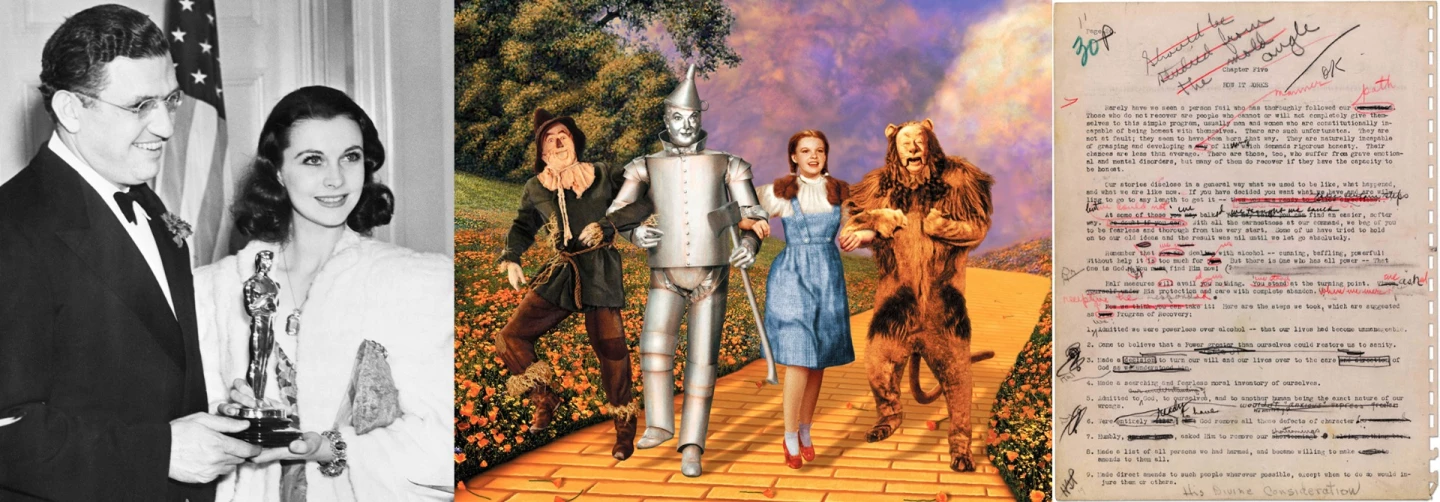
Some perspective on the price: A century or two hence, Jobs, Wozniak and Apple will be of massive historical importance, so despite its price, this contract will appreciate in value. It sold for a similar price at auction to the following items: Judy Garland's "Dorothy Gale" blue cotton test dress from 1939 movie The Wizard of Oz (above center – $1,565,000); David O. Selznick's Best Picture Oscar for Gone With The Wind (Selnick is pictured with the film's lead actress Vivien Leigh above left – $1,542,500); the original 1939 hand-corrected typescript of the AA Bible Alcoholics Anonymous: The Story of How More than One Hundred Men Have Recovered from Alcoholism (above right – $1,576,000); an autograph manuscript of the "Circe" episode of James Joyce's Ulysses ($1,546,000); a copy of the first printing of the American Declaration of Independence ($1,595,000 in 1990); an autograph draft manuscript of the unfinished Jane Austen novel The Watsons ($1,601,284 - £993,250). Two Superman comic books and one TinTin comic have sold for more than this contract.
21 - De humani corporis fabrica libri septem by Andreas Vesalius
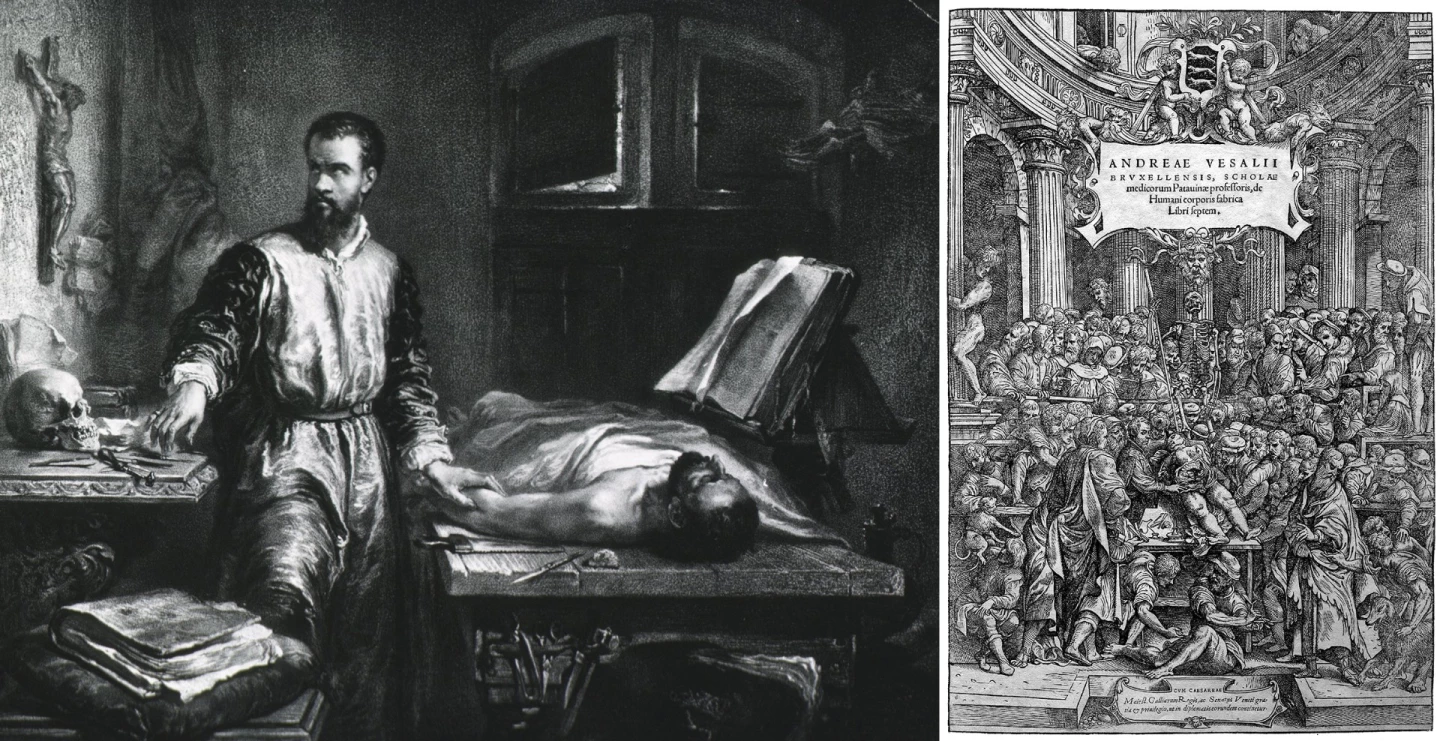
Price: $1,652,500
Created: June, 1543
Auctioned: Christie's (New York), March, 1998
Significance: Andreas Vesalius (1514 - 1564) is generally regarded as the founder of modern human anatomy. The author of De humani corporis fabrica (On the Fabric of the Human Body), he was born in Brussels, which though now part of Belgium, was then part of the Habsburg Netherlands. He was professor at the University of Padua and later became Imperial physician at the court of Emperor Charles V. His subsequently Latinized birth name (Andries van Wesel), can be found in many forms including Andrea Vesalius, André Vésale, Andrea Vesalio, Andreas Vesal, André Vesalio and Andre Vesalepo.
Upon Vesalius' matriculation in 1537 at the University of Padua, an important center of medical instruction, he was immediately awarded the degree of doctor and appointed to teach surgery and anatomy.
De humani corporis fabrica was Vesalius' magnum opus. The book had almost as much impact on the world as did Newton's Principia, revolutionizing the science of anatomy and how it was taught.
From the Christies auction catalogue description: In contradiction to the common practice of his day, Vesalius insisted that human anatomy should be learned from the study of the human body and that the physician should undertake dissection himself rather than leave this work to assistants. Based on his own experience and observations, he corrected a number of errors made by Galen, the authority whose anatomy had been largely based on the dissection of animals. Dissenting from the traditional approach to dissection, he proposed that the logical order of anatomical study should proceed from the skeleton and muscles, through the blood vessels, nerves, abdominal viscera, and thoracic organs, to the brain. All of these principles are represented in the text and in the illustrations of De humani corporis fabrica, making this encyclopedic account of the structure and workings of the human body a fuller and more detailed description and illustration of human anatomy than any work that had preceded it.
Perhaps the most beautiful medical book ever published, the Fabrica combines scientific exposition, art and typography in a manner unprecedented in the 16th century and seldom equalled in later times. The more than 200 woodblocks for the illustrations were prepared in Venice under Vesalius' supervision and shipped to the publisher Oporinus in Basel with the author's precise instructions for placing them in relation to the text and for keying explanations printed in the margins to particular illustrations or details. The carefully drawn and accurately shaded illustrations marked a new level of realism and detail in anatomical illustration. Their scientific value is attested by the fact that they were repeatedly copied or plagiarized in subsequent anatomical publications for a century and more.
The artistic quality of the Fabrica's illustrations has prompted much speculation as to the identity of the artist. On the basis of a statement by Vasari, they have been attributed to Jan Stephan von Kalkar (ca. 1499-1546/50), a Flemish compatriot of Vesalius and a pupil of Titian. Kalkar had contributed the three drawings of skeletons to Vesalius' Tabulae anatomicae sex, which was published at his expense in 1538, but differences in artistic quality between the Tabulae's skeletons and those of the Fabrica suggest that Kalkar was not responsible for the latter work. The three plates of veins in the Tabulae and the woodcut in the Venesection Letter, all based on drawings by Vesalius, indicate that he himself could not have been the artist of the Fabrica, although he may be responsible for some of the details and undoubtedly supervised the accuracy of the drawings as well as the cutting of the woodblocks. The illustrations of the Fabrica are now judged, on the basis of style and quality, to be the work of an unidentified artist or artists of the school of Titian.
Further testimony to the extraordinary abilities of Vesalius is that the work which is still revered in medical circles 500 years later, was published prior to his thirtieth birthday.
The US National Library of Medicine has an ongoing project digitizing Historical Anatomies on the Web that is designed to give internet users access to high quality images from important anatomical atlases in the Library's collection. De humani corporis fabrica libri septem is included in this project.
Check back tomorrow for the 5th part of the series, or catch up with parts 1-4 here.

